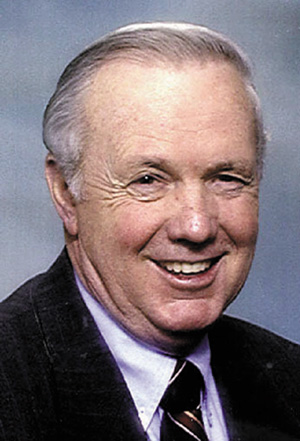No. 795 - THE CONCEPT OF CASH-CONTROLLED SPENDING!
No. 795
Jim Davidson -- NEWSPAPER COLUMN
THE CONCEPT OF CASH-CONTROLLED SPENDING!
A few weeks ago I discovered, quite by chance, a dirty little secret about saving money. The secret is simply this (you will have to decide if you think it’s dirty or not): You don’t have to account for every penny but you do have to save. If you do this and do it well, you will have all the money you will ever need. If you don’t, you risk living hand-to-mouth for the rest of your days.
These words are found on the back cover of a fantastic little book titled, “Don’t Make a Budget.” The author of this book is Ken Robinson, a financial planner who lives in Cleveland, Ohio. After I finished reading his book, I dropped Ken an e-mail and he responded that he was pleased that I wanted to share some of his ideas with you.
Statistics tell us that most marriages fail because of money problems. And no wonder: the average person in our nation has over $15,000 in credit card debt. Being broke and never having any money creates a strain on even the best marriages. This affects most single people as well. Of course the only way to overcome this malady is to be able to save money, which is obviously something that many people are not able to do. To curb spending, many people make a budget to account for where all their money is going, and they honestly try to save money. More often than not, their money never consistently makes its way into a savings account.
Once we understand what we really should do to save money, we will realize that budgeting gets the process exactly backward. Most people have been taught to create a list of expenses and then decide where to cut back. Then we total up these cutbacks and decide how much we can save. But the key to saving is not to figure out where we can cut back but rather to make a decision about how much we are going to save. The decision about where to cut back will take care of itself. In his book, Ken talks about the concept of cash-controlled spending, which is something I have been doing for years without ever thinking about. Here is the simple concept that I have used, and if you need it, will work for you as well.
I have only one credit card that is used to validate business expenses for tax purposes, and do my best to maintain a zero balance each month. When I receive monthly income from our business and my Social Security check, I pay our bills, including regular savings, and then deposit a small amount in a personal checking account. When this deposit is made, I keep between $75 and $100 for my wallet to have for incidental spending. I try to make this small amount of cash go as far as it will. You know what happens when you break a $20 bill don’t you? It’s gone before you know it. With me, it’s almost a game to be able to go for two, three or four days without breaking a $20 bill. When it comes to buying lunch for others or situations where I need to step up to the plate, I am not cheap, as I always do my part and then some.
And here is why this cash-controlled spending concept works. When we sign a check or use plastic, we don’t actually think about the fact that it’s money we are spending. We do when it’s cash. Why do you think casinos use poker chips and not real cash money when it comes to rolling the dice? It’s a lot easier to bet $10,000 in poker chips than to bet $10,000 in hard cash that you can see and touch. When we become conscious of what we are really spending, we will do a better job of spending it. Ken’s web site is: www.FinancialSelfConfidence.com.
---
(EDITOR'S NOTE: Jim Davidson is a public speaker and syndicated columnist. You may contact him at 2 Bentley Drive, Conway, AR 72034. To begin a bookcase literacy project visit www.bookcaseforeverychild.com. You won’t go wrong helping a needy child.)
